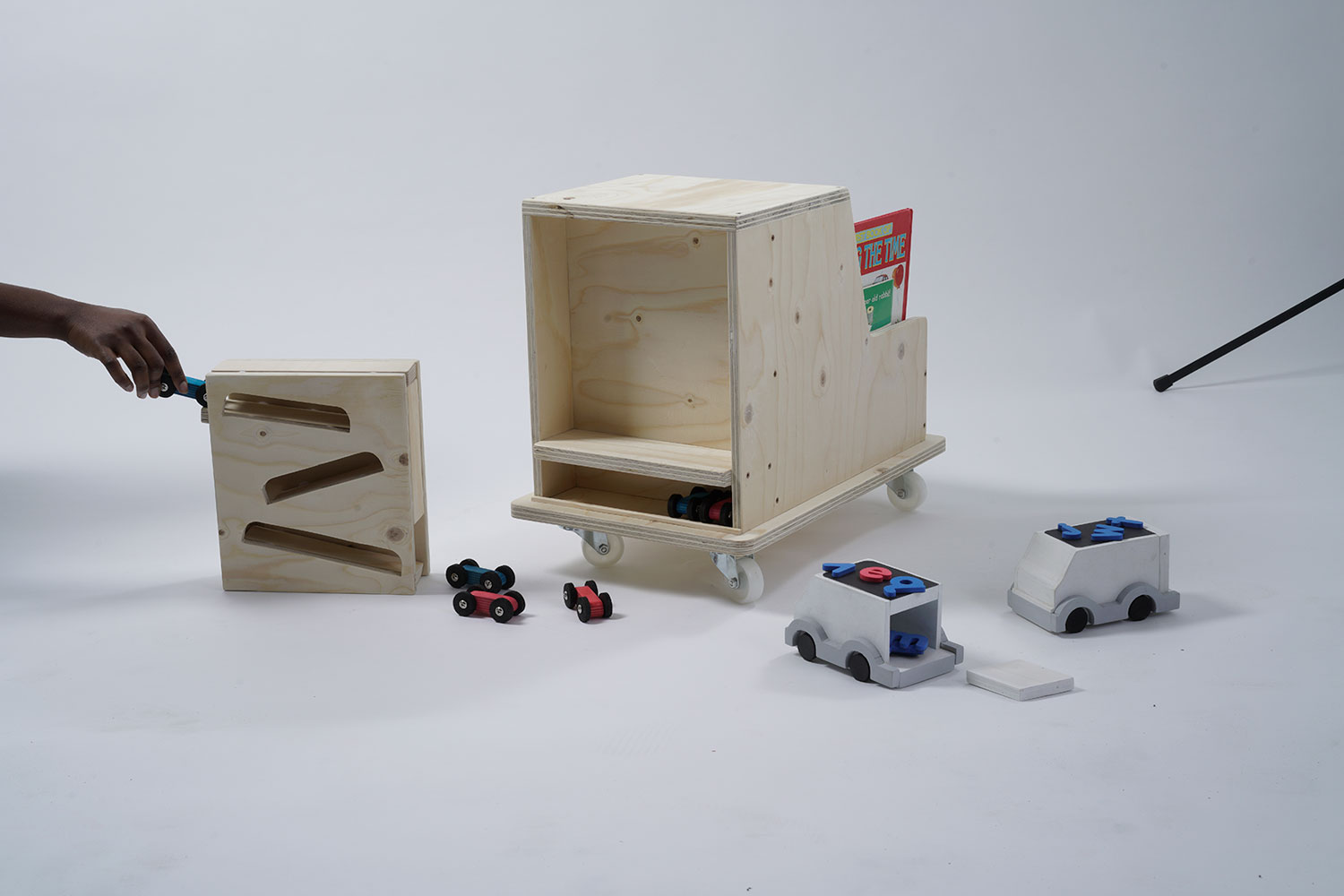Our Foundation Diploma in Art and Design is divided into four curriculum areas: 3-Dimensional Design and Architecture; Fashion and Textiles; Fine Art and Graphic Communication Design. Each of these areas is divided into pathways. Samuel Georges has spent the last academic year studying Product Design and Ceramics, which sits in 3-Dimensional Design and Architecture. Here he tells us about his final project, in which he has created a multipurpose, educational toy for deaf children.
Can you tell us a bit about your project?
This toy vehicle is developed to stimulate the educational needs of deaf children aged between 6 and 11. This multi-functional product includes a vehicle-shaped bookcase which incorporates a small portable ramp, accompanying flip cars and two toy vans which contain a set of magnetic letters. The structure is made from hand-sanded plywood and assembled through simple screw fasteners. Some elements have been painted with acrylic and water-based paint, whereas the bookcase and car ramp have been kept plain to maintain a natural effect. This simple and versatile design is proposed for use at Frank Barnes School for Deaf Children – just around the corner from Central Saint Martins’ King’s Cross campus.
Why were you interested in working specifically within an educational environment?
I wanted to work in an educational setting because I enjoy making toys for children. I was also a pupil at Frank Barnes School. From my own learning experiences there, I know that deaf children need extra stimulation and attention to develop good mathematical and language skills. So, I wanted to produce educational toys which would encourage the children with their literacy and their imaginative, interactive, and investigative skills.
How did you develop the product?
When I looked at different types of toy vehicles I was especially inspired by the PLUST VAN by Michele Menescardi. The balance between play and learning they offer influenced me greatly as it made me realise it’s essential for children to enjoy both playing and learning with the product. Over time, I met with deaf pupils, the head teacher and other teachers at Frank Barnes School. This gave me the opportunity to ask questions and find out about the children’s educational needs, and also to observe them in the classroom, to understand what type of toys they prefer and how they use them. At the same time, I attended a series of workshop that led me through the process of developing and improving the product.

Samuel Georges, Vehicle to Play, 2018
Could you talk a bit about the educational needs of the children and how the product addresses these?
Deaf children are very limited in their incidental learning – for instance, they cannot easily pick up English from what is spoken around them. These toys were designed to encourage the development of language and literacy in general but also to facilitate interaction with other children and teachers. The educational toy I have developed provides the opportunity to learn about letters, how they form words and sentences and to learn new vocabulary. It is also a starting point for children to investigate and figure things out, like how to build, how things move and also sparks an interest in magnets and how they work. Educational toys also enhance children’s imaginations and creative play, and stimulate social skills like sharing and taking turns.
Do you plan to develop the product any further or any of the themes you have been working on?
I am planning to improve the stability of the product by replacing the castor wheels. My current educational toys focus more on literacy and creative play, so I am planning to expand my ideas further and focus on other skills such as maths, art and sport.
More:
- Read about Foundation Diploma in Art and Design
- Come and visit the Foundation Show 2018

